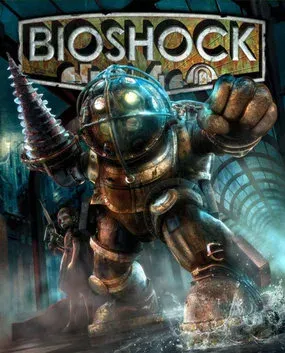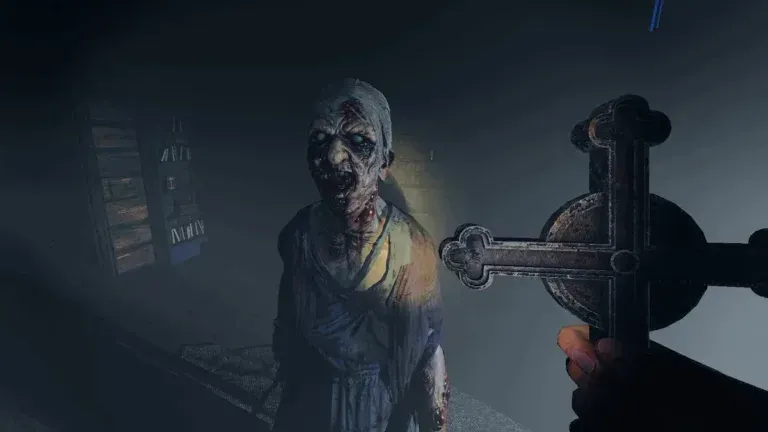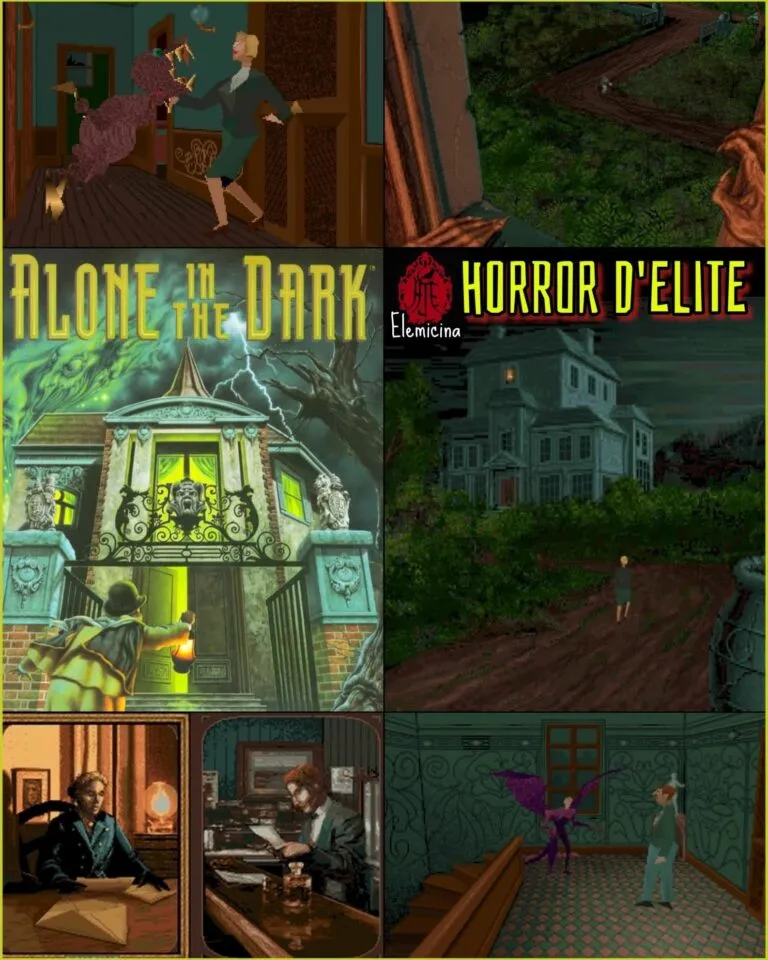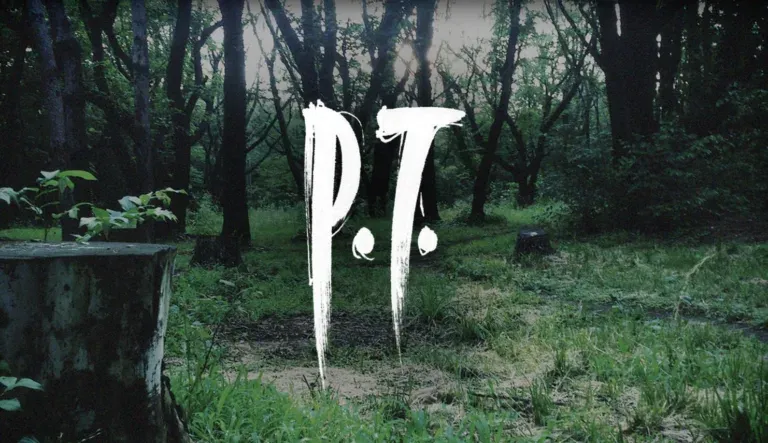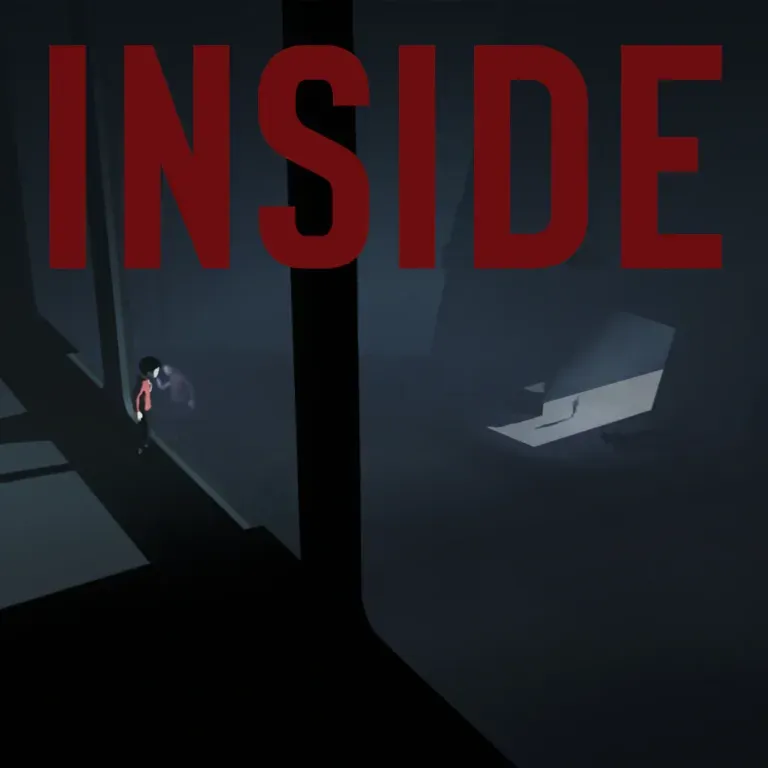Bioshock
Introduction
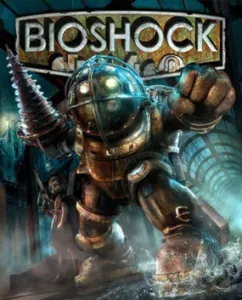
In the video game landscape of 2007, “BioShock” stood out not only for its innovative gameplay mechanics but also for its unique narrative and visual design. Created by Ken Levine and developed by Irrational Games, “BioShock” is often celebrated as one of the greatest games of all time, thanks to its combination of horror, science fiction, and philosophical elements. Set in a dystopian underwater city called Rapture, the game is distinguished by its oppressive atmosphere, engaging narrative, and complex moral choices.
Plot and Setting
The plot of “BioShock” begins with a plane crash in the Atlantic Ocean, leaving the protagonist, Jack, stranded in an underwater city called Rapture. The city was built in the 1950s by Andrew Ryan, a magnate and ideologist who created Rapture as a refuge for those seeking to escape societal restrictions. Ryan envisioned Rapture as a “utopia” where industry and science could thrive without external interference.
However, the reality is quite different: the city has fallen into chaos and anarchy due to the use of a powerful genetic compound called “ADAM”, which grants superhuman abilities to its users. The citizens of Rapture, under the influence of ADAM, have transformed into deformed and violent creatures known as Splicers. At the heart of the conflict are the Little Sisters, genetically modified children who harvest ADAM from corpses, and the Big Daddies, gigantic protectors who guard the Little Sisters.
The plot unfolds through a series of missions and encounters with key characters, including the antagonist Andrew Ryan and the mysterious Atlas, who guides Jack through the city and helps him uncover the truth about Rapture and his past.
Gameplay and Mechanics

“BioShock” combines elements of first-person shooters with an RPG-based gameplay system, allowing players to explore and customize their play style. The main mechanics include:
Use of ADAM and Plasmids: ADAM allows players to use plasmids, superhuman abilities that can range from electrical attacks to mind control of enemies. Plasmids add a strategic dimension to gameplay, enabling players to adapt their tactics to various situations.
Weapons and Upgrades: The game offers a wide range of weapons, from pistols to heavier weapons like grenade launchers. Players can also upgrade their weapons and plasmids to enhance their combat effectiveness.
Exploration and Collection: The city of Rapture is rich in detail and hidden stories. Exploration is crucial for uncovering the plot and finding useful resources. Players can collect supplies, find audio recordings, and solve puzzles to progress in the game.
Moral Choices: One of the distinctive features is the moral choice system, particularly concerning the Little Sisters. Players can choose to save or harvest the Little Sisters, affecting the game’s ending and the city’s fate.
Narrative and Themes
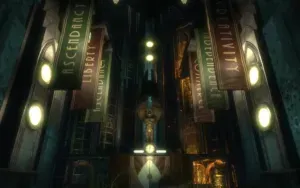
“BioShock” is known for its deep narrative and explored themes. The city of Rapture serves as a metaphor for the ideologies of libertarianism and extreme individualism. Andrew Ryan, the founder of Rapture, represents the pinnacle of these ideals, but his utopia quickly transforms into a dystopia due to his own beliefs.
The game explores various themes, including:
Freedom and Control: Rapture’s philosophy is based on absolute freedom, but this quickly leads to chaos and loss of control. The game questions the true nature of freedom and the cost of its pursuit.
Identity and Manipulation: Jack, the protagonist, gradually discovers the truth about his identity and past. Manipulation and mind control are central themes, with players discovering how their actions have been guided by external forces.
Social and Philosophical Critique: The game offers a critique of objectivism and extreme capitalism through the representation of Rapture’s decay. The recordings and documents scattered throughout the city provide a critical overview of society and its disintegration.
Visual Style and Atmosphere
The visual design of “BioShock” is inspired by the 1950s, with an art deco aesthetic that helps create a unique and immersive atmosphere. The architectural details of Rapture, its neon lights, and its underwater settings make the city both captivating and unsettling.
The choice of setting the game underwater adds a sense of claustrophobia and isolation. The audio design, with its combination of period music and disturbing sounds, complements the oppressive atmosphere and keeps players on edge.
Reception and Impact
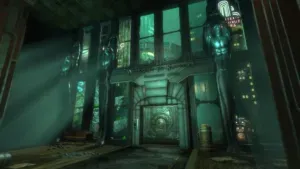
The impact of “BioShock” extends beyond its initial release, influencing many subsequent games and helping to define the genre of role-playing games and first-person shooters. Its legacy is evident in later titles in the series and in the work of other developers who have sought to emulate its success.
Conclusion
“BioShock” represents a masterpiece of video game design and interactive storytelling. With its combination of innovative gameplay mechanics, engaging plot, and extraordinary setting, it continues to be a benchmark for games that seek to blend entertainment with deep reflection. The city of Rapture and its inhabitants remain etched in players’ memories, showcasing the power of video games as a form of art and narrative.

